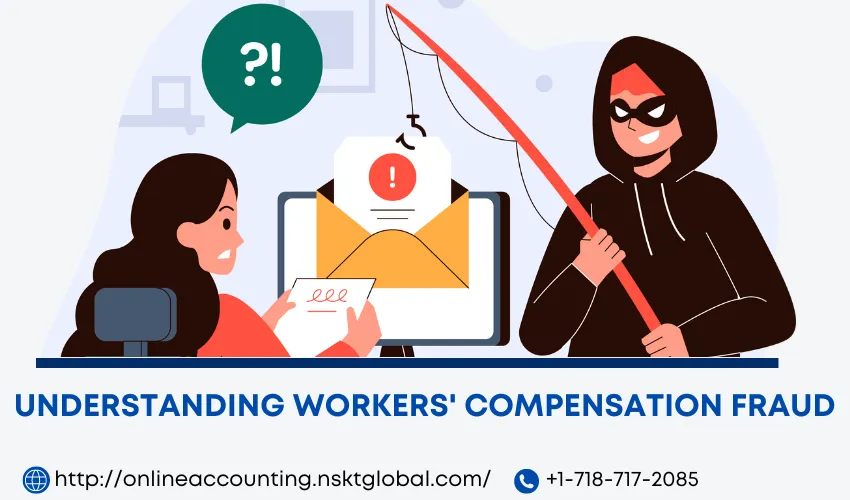Table of Contents
Workers' compensation is a fundamental safety net for workers who witness workplace injuries or ailments, offering financial aid for medical costs, lost wages, and recuperation. nonetheless, this essential system isn't bulletproof to abuse. Fraudulent claims not only harm businesses and insurance providers but also undermine the trust and integrity of the entire workers' compensation infrastructure.
In this in-depth article, we dive into the workings of workers' compensation fraud, exploring its implications, common fraudulent practices, the impact on various stakeholders, and effective measures to combat this deceptive conduct. Through a compelling case study, we shed light on the realities and consequences of such fraudulent activities.
Understanding Workers' Compensation Fraud
Workers' compensation fraud refers to purposefully furnishing false information or manipulating the system to illegitimately gain benefits. This deceitful practice can involve workers, employers, healthcare providers, or a combination thereof. Fraudulent exercise within the realm of workers' compensation can be seen in several forms, including exaggerated injuries, phantom workers, misclassification of workers, falsified documents, and double dipping.
Exaggerated injuries occur when claimants amplify the severity of their injuries or fabricate symptoms to extend their recovery period and take larger benefit pay-outs. Phantom employees represent a fraudulent scheme in which unconscionable employers add non-existent employees to their payroll, inflating their workers' compensation insurance costs and diverting these exaggerated premium payments for individual gain. Misclassification of workers is another common form of fraud, where employers erroneously classify workers as independent contractors rather of employees to escape their responsibility of providing workers' compensation coverage.
Falsified documents play a significant part in workers' compensation fraud. Fraudsters may forge medical records, pay stubs, or tax forms to support their fraudulent claims, thereby inflating the compensation they anticipate receiving. Double dipping occurs when individuals engage in fraudulent exercise by concurrently claiming workers' compensation benefits while working under a different identity or concealing their employment.
Case Study: John's Fraudulent Workers' Compensation Claim
To gain a deeper understanding of the mechanics of workers' compensation fraud, let's examine a case study involving John, a construction worker, who filed a fraudulent workers' compensation claim.
John, a hard-working construction worker, sustained injuries while working on a corporate complex project. His injuries necessitated medical attention, and he was unfit to work for many weeks. John filed a legit workers' compensation claim and took the benefits he was entitled to, including medical costs and lost wages.
However, John saw an opportunity to exploit the workers' compensation system. He felt that he wasn't being compensated adequately and began to consider filing a fraudulent claim to increase his benefits. John conspired with his co-worker, Mike, to fabricate and exaggerate his injuries to extend his recovery period and obtain larger benefit pay-outs.
There are some of the fraudulent conditioning that John and Mike engaged in
1. Falsifying Medical Records
John visits a corrupt medical professional, Dr. Smith, who agrees to partake in the fraud scheme. Dr. Smith provides a false medical report that exaggerates the severity of John's injuries and recommends an extended recovery period. The report indicates that John's injuries are more severe than they actually are.
2. Colluding with Witnesses
John and Mike identify and persuade a few co-workers to act as witnesses. These witnesses agree to give false statements, supporting John's claim that his injuries were due to the company's negligence or unsafe work conditions. They may also claim that they observed the company ignoring safety protocols.
3. Concealing Employment
To maintain eligibility for workers' compensation benefits, John and Mike determine that John will continue working under a false identity while fraudulently claiming that he cannot work due to the injuries. They arrange for John to perform low- risk tasks in a other construction project using an alias, ensuring that his true identity remains secret.
4. Ghost Employees
In some cases, fraudulent employees who don't exist or have never worked for the company might be added to the payroll. These" ghost employees" are included to increase the company's workers' compensation insurance costs. The conspirators may split the additional insurance compensations among themselves.
5. Exaggerating Lost Wages
John and Mike submit falsified documentation, including forged pay stubs and tax forms, to inflate John's lost wages. They claim that John would have earned significantly more had he not been injured, thereby expanding the compensation amount they hope to take.
Detection and Consequences
While workers' compensation fraud schemes can be laborious to discover, insurance companies and employers use various approaches to identify fraudulent claims. These include rigorous investigations, surveillance, data analysis, and collaboration with law enforcement agencies. However, individuals involved in workers' compensation fraud risk face legal consequences, such as fines, If found guilty.
It's essential to note that this case study presents a fictional scenario to illustrate how workers' compensation fraud could occur. Workers' compensation fraud is illegal and unethical, and it's crucial to promote honesty and integrity in all aspects of the workplace.
NSKT Global can help you create strategies and put in place such controls that prevent and deter worker’s compensation fraud. We are committed to providing excellent fraud investigation services with complete focus on client-centric solutions.



